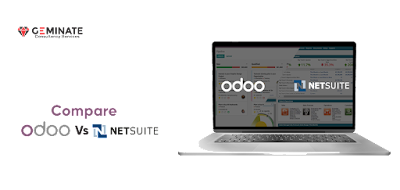However, no great thing can ever be achieved without a little effort. In order to enjoy the complete benefits of an efficient Enterprise Resource Planning application, you need to implement it appropriately.
New to ERP implementation or ERP data migration? Here’s an overview!
What is ERP Implementation?
A complete ERP implementation process involves proper planning, configuring, customizing, and deploying an ERP platform. The implementation process ensures that the ERP system is able to manage multiple business functions with higher efficiency.
For example, you would want to integrate all your core operations, including human resources, financial management, customer profiles, sales, manufacturing, supplies, deliveries, and so on. To handle all of these manuals can be a hectic task, and it’s prone to human errors too! This is where the role of an effective ERP implementation comes into play!
5 Phases of ERP Implementation
These are the five core steps or phases of an ERP system implementation.
Planning and Identifying Risks
The first phase of implementing an ERP system includes project planning. However, before you even begin the planning session, you need to discover the potential issues or risks associated with your business.
During the planning stage, try to identify your specific needs and the working techniques of your company. Before the final decision-making and documentation of a plan, you need to address the problems that may be present in your current workflow.
Design and Development
Then follows the designing phase that allows you to work on several configurations to get an idea of the final look of your system. The design stage also includes documenting some standard processes and defining your key roles.
After the problem-solving and brainstorming phases, the final task of development comes in, which requires an experienced development team. Make sure that your developer begins writing the code only after the potential problems, challenges, or threats have been identified or resolved.
Deployment
Once the final project is ready, it’s time to implement the output. Your project team should be able to run a few tests for a couple of days to determine its performance and efficiency before going live.
It is also the responsibility of your project team to train your end-users before they finally start handling their day-to-day tasks using the new ERP system by abandoning the old one. You will also need to define specific roles to the desired users and set permissions to data accessibility and security accordingly.
Configuration
Once the ERP installation is complete, your project management team should be able to configure your settings and the necessary options that you will need in your day-to-day operations. This is where a customized and configured ERP system becomes essential as opposed to shelf ERP systems. ERP customization is tailored to your particular business, thus removing any unwanted tools or features.
ERP Data Migration
Finally, you need to migrate your ERP data from the old system without running the risk of data losses. The ERP migration phase must be done by an experienced hand as it involves the transfer of all your vital data, such as financial, transactional, customer profiles, human resources, salaries, manufacturing, sales, and so on.
After transferring all your data from the old system to the new, make sure to define user roles, configure security settings, and grant permissions accordingly to prevent data misuse or accidental losses.



